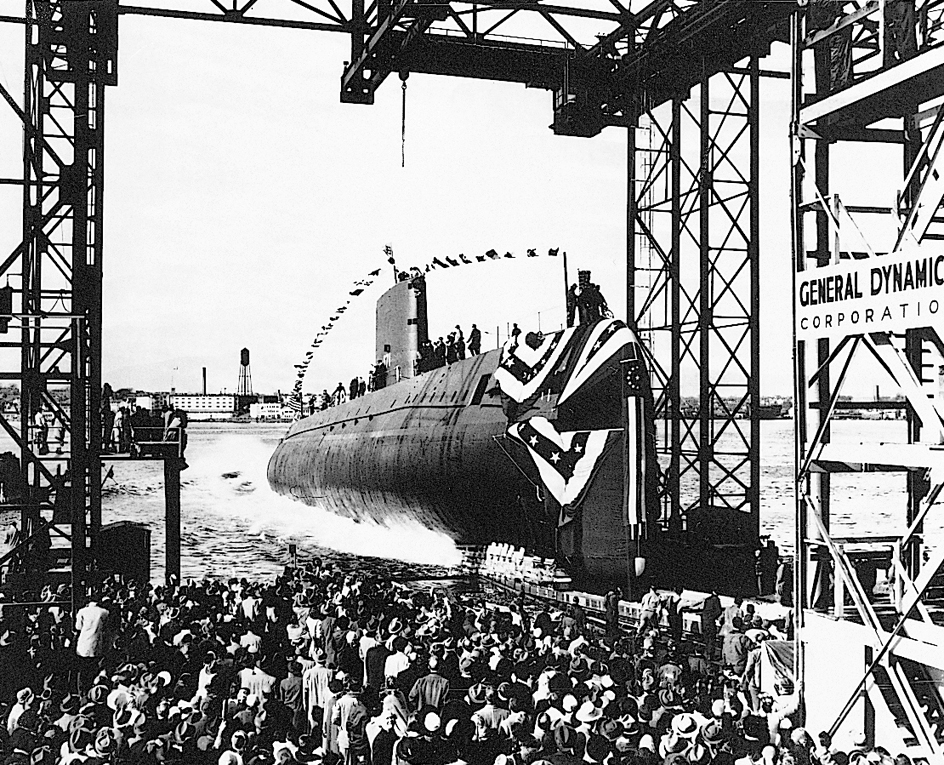Nautilus is the name of two United States Navy submarines. USS Nautilus (SS-168) was launched in 1930 and took part in major combat in World War II (1939-1945). USS Nautilus (SSN-571) was launched in 1954 and was the world’s first nuclear-powered ship. USS stands for United States Ship. SS is the Navy’s designation for an attack submarine. SSN designates a nuclear-powered attack submarine.

During World War II, USS Nautilus (SS-168) took part in the Battle of Midway and attacked shipping near the Japanese home islands. The submarine transported troops and supplies for assaults on islands in the central Pacific Ocean, the western Aleutian Islands, and the Philippines. Nautilus also provided gunfire support and photographed landing beaches and defenses. The ship earned 14 battle stars and the Presidential Unit Citation for the crew’s heroism in combat. A battle star is awarded for a ship’s participation in a military campaign. The Navy decommissioned (retired) the submarine in 1945.
As a nuclear-powered submarine, USS Nautilus (SSN-571) ran faster and farther than other submarines. It set records for distance traveled while submerged and for distance traveled without refueling. In August 1958, Nautilus sailed beneath the ice to become the first ship to reach the geographic North Pole. For this effort, the ship was awarded the first Presidential Unit Citation ever issued in peacetime. The submarine was decommissioned in 1980 and named a national historic landmark in 1982. In 1986, Nautilus opened to the public as part of the Submarine Force Library and Museum in Groton, Connecticut.
See also Naval Submarine Base New London ; Rickover, Hyman George ; World War II (The war in Asia and the Pacific) .
